Catherine’s Palace
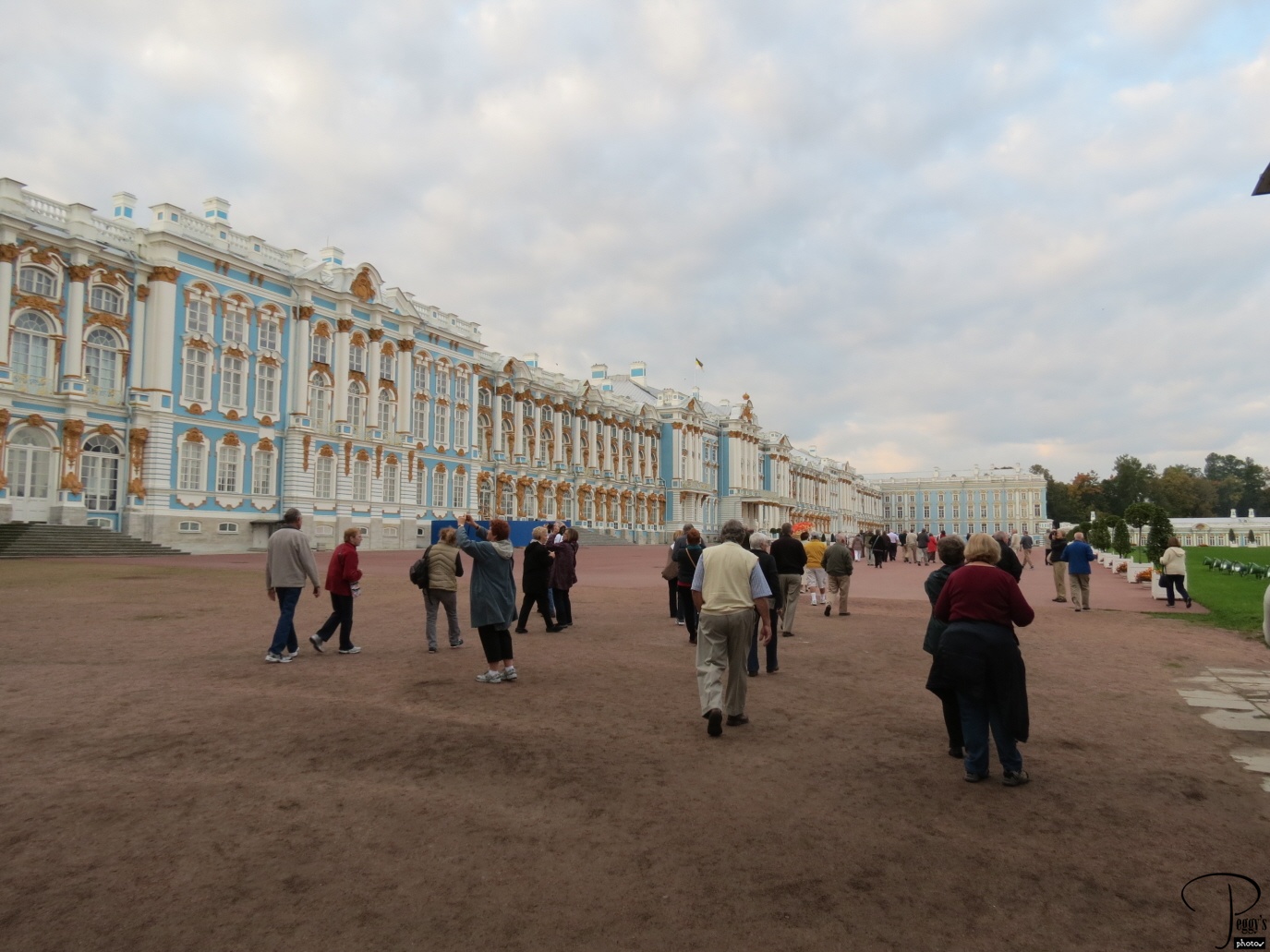
Today, we had an optional tour to Catherine’s Palace and to Peterhof, both palaces of the tsars and both a short distance from St. Petersburg. First, we visited Catherine’s Palace, also called Catherine Palace and Tsarstoe Selo, in Puskin. The palace was named after Catherine I, the wife of Peter the Great, for whom it was built, not after Catherine the Great. Catherine I ruled Russia for two years after the death of Peter. But the grandeur of the palace is attributed to Empress Elizabeth, the daughter of Catherine and Peter. The palace was commissioned in 1717 and was completed in 1743.

Catherine’s Palace
Catherine’s Palace
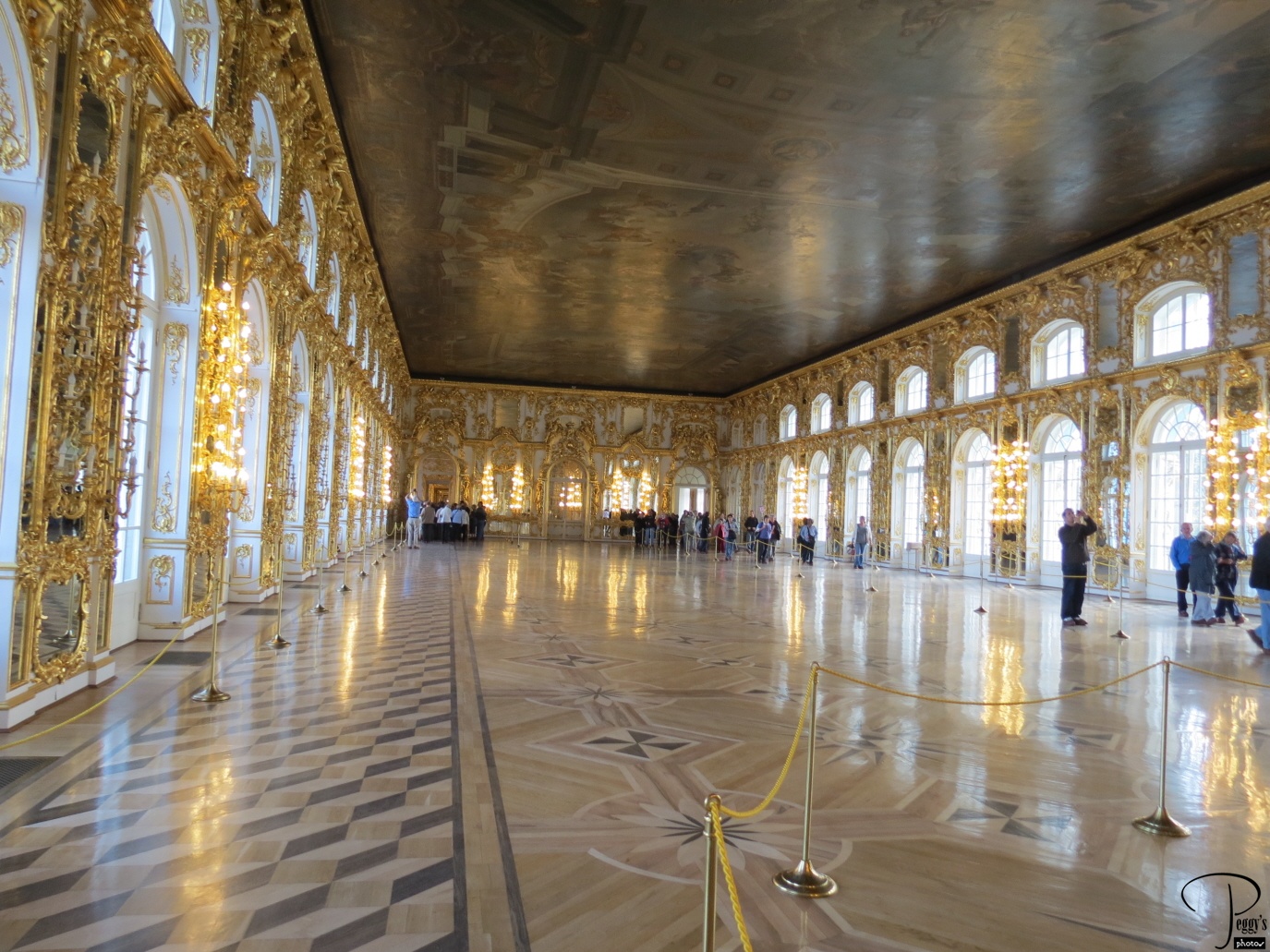
One of the most elegant rooms in the palace is the Grand Hall.

Catherine’s Palace
Catherine’s Palace

The famous Amber Room. This photo was scanned from a postcard as no photos were allowed in this room. The construction of the Amber Room, a series of panels, was begun in 1701 and first installed at the Charlottenburg Palace of Friedrich I, the first King of Prussia. It was designed by a German sculptor and constructed by a Danish craftman. After Peter the Great admired the Amber Room at the German palace on a visit, the then King of Prussia, Fredrick William I, presented it as a gift to Peter in 1716 to cement a Prussian–Russian alliance against Sweden.
The Amber Room was first installed in the Winter House in St. Petersburg, then Empress Elizabeth had it moved to Catherine’s Palace. The amber panels covered about 180 square feet and consisted of six tons of amber and other semi–precious stones.
During World War II, the Germans looted the Amber Room and shipped the panels to Konigsberg, Germany, and it was reinstalled in the Konigsberg Castle’s museum. Subsequently, Allied bombing destroyed the museum. It is not known if the Amber Room itself was destroyed in the bombings or if it was moved beforehand and is still intact somewhere.
The Amber Room at Catherine’s Palace is a re–creation, begun in 1979. Old black and white photos of the room were used for this, matching shades of amber to the shades in the photos.

Catherine’s Palace
Catherine’s Palace
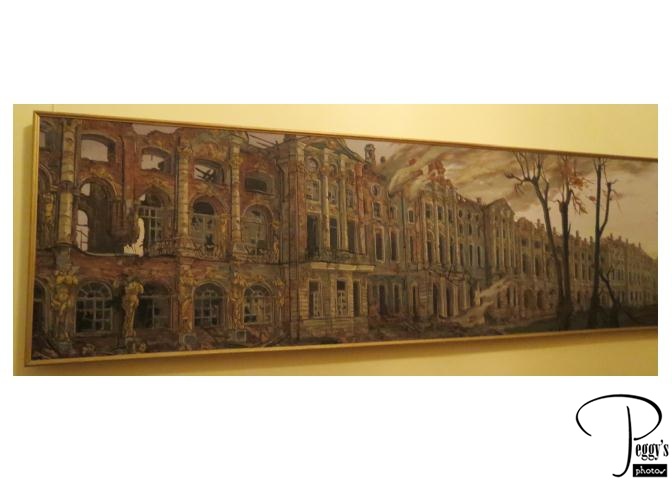
A photo of the condition of Catherine’s Palace after World War II.

Catherine’s Palace
Catherine’s Palace
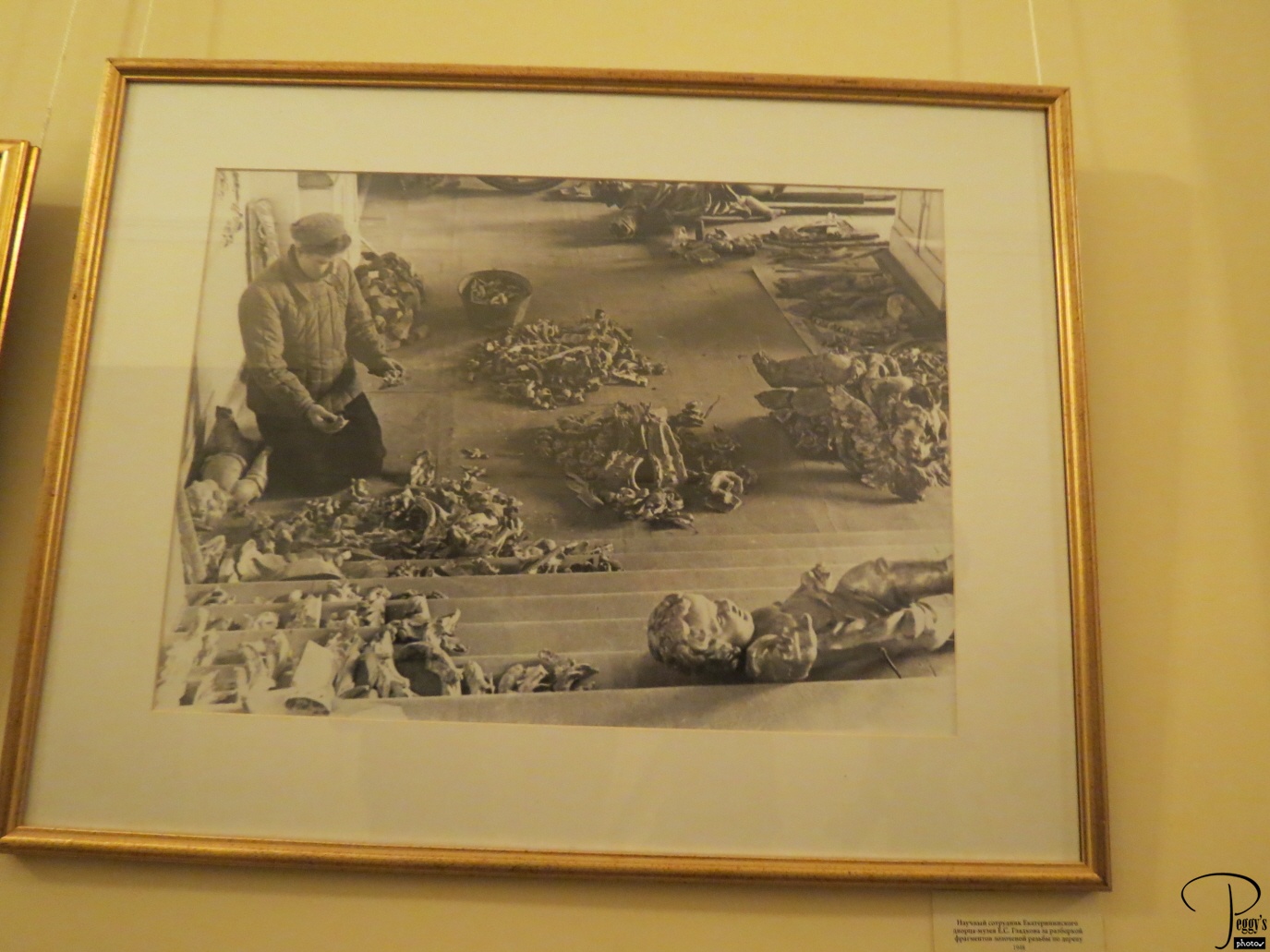
A photo showing some of destroyed art objects at Catherine’s Palace after World War II.

Catherine’s Palace
Catherine’s Palace
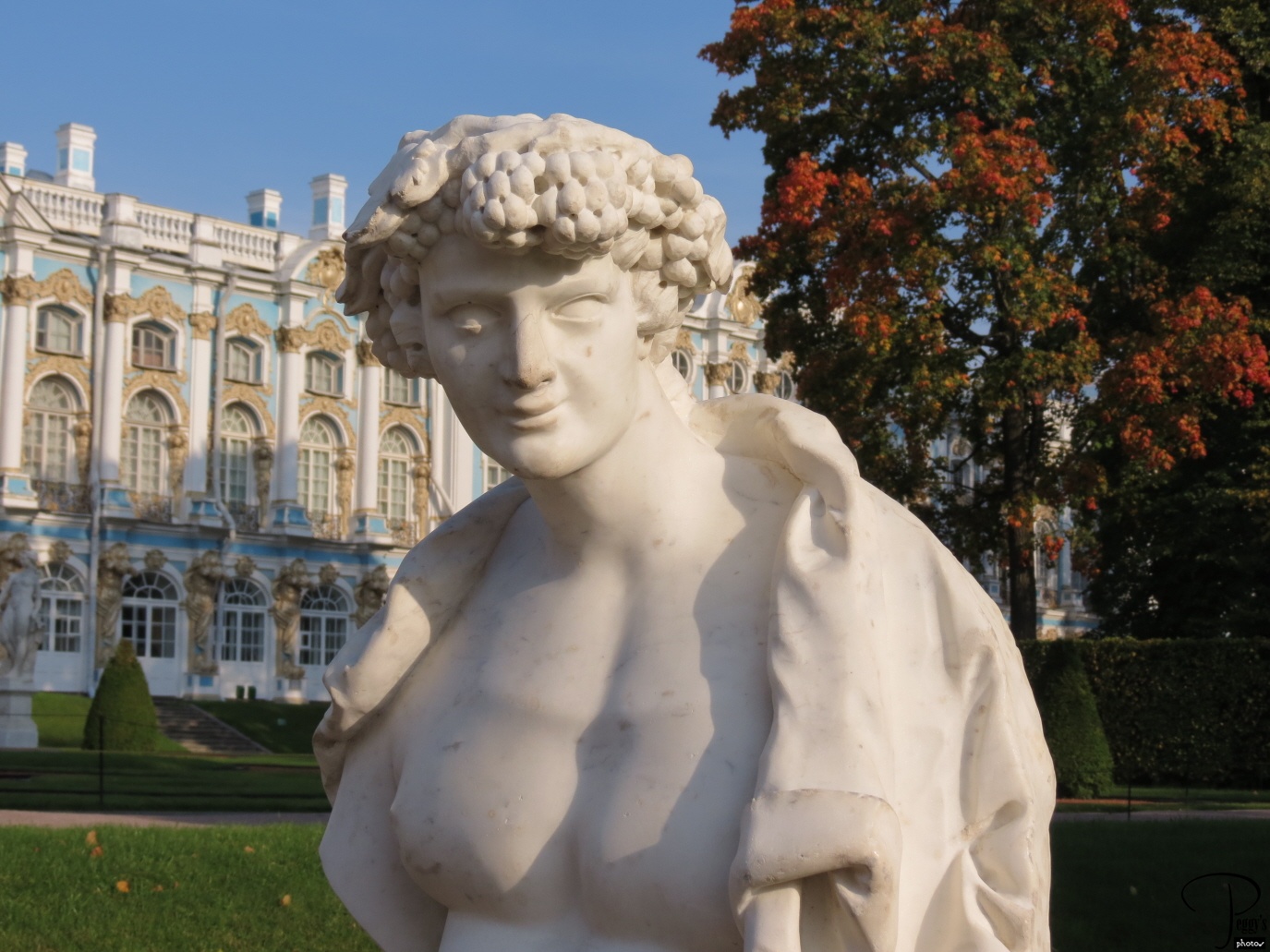
I took a walk around the palace’s gardens before what I thought would be the time for the group to meet up. What I heard our local guide say was that there was time to walk around the gardens if “you” want to. I took the “you” to mean “you singular,” not “you plural,” meaning the whole tour group. Anyway, by going off on my own, I was able to take some good photos that I wouldn’t have been able to take otherwise. This is one of them.

Catherine’s Palace
Catherine’s Palace
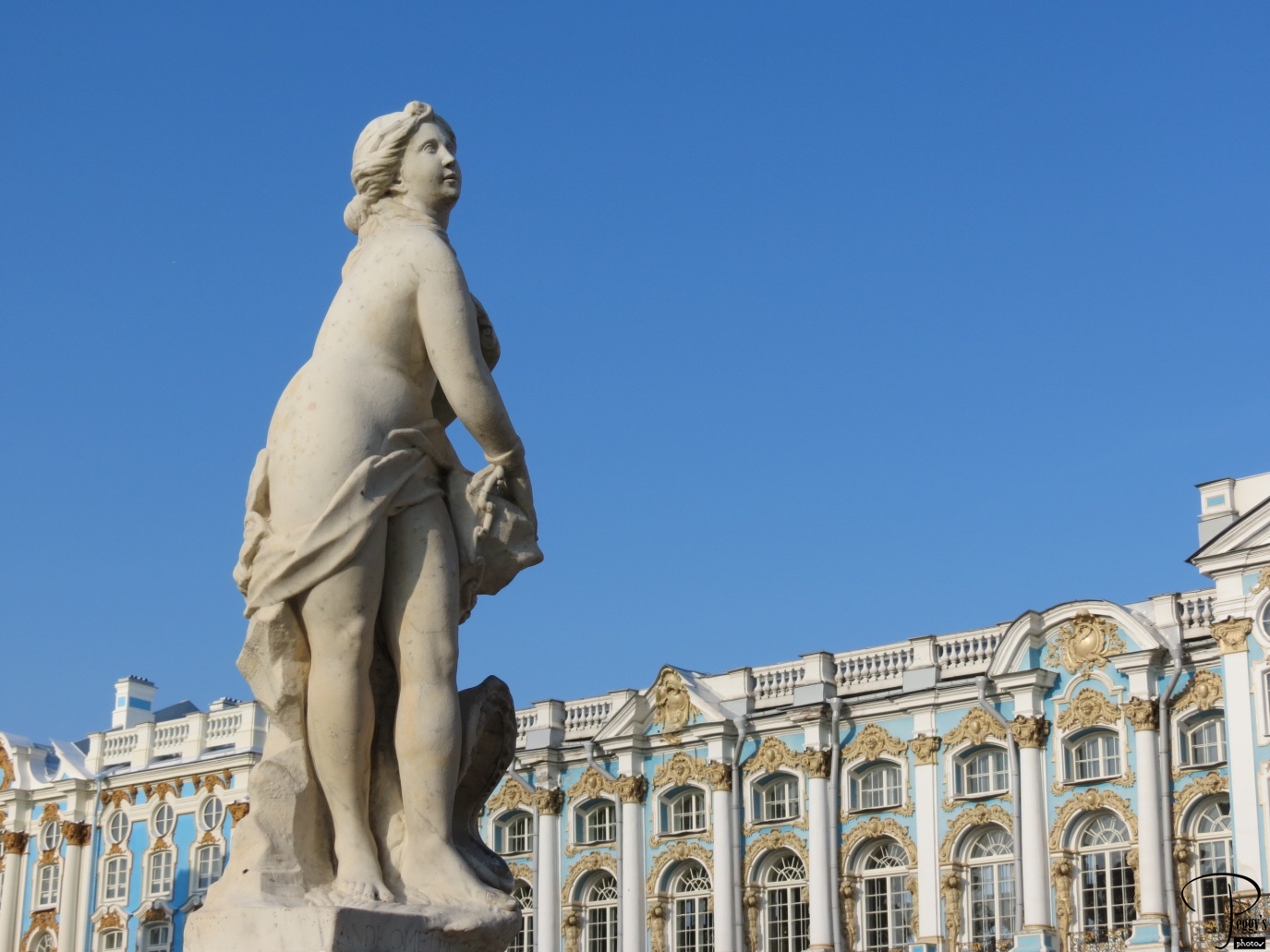
This is another one.

Catherine’s Palace
Catherine’s Palace
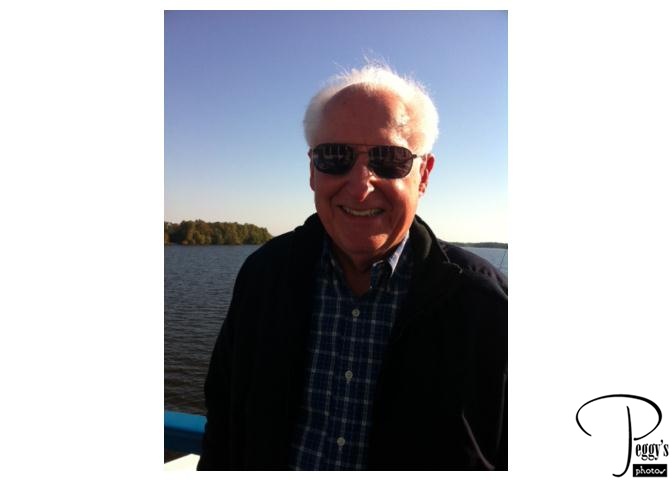
I realized that no one else from my group was walking through the gardens, so I walked back to the meeting place and was met by Tanya who asked, exasperated, where I had gone off to. I told her that I had asked Stu (photo of Stu) what time we were to meet and he said 11 a.m.––it was only 10:30 a.m. when I got back to the group. So I got to blame my disappearance on Stu. Sorry Stu. Stu was one of the five of us who were tablemates, along with me, Lynn, Dave, and Joyce. I had not included a photo of him elsewhere.

Catherine’s Palace
Catherine’s Palace
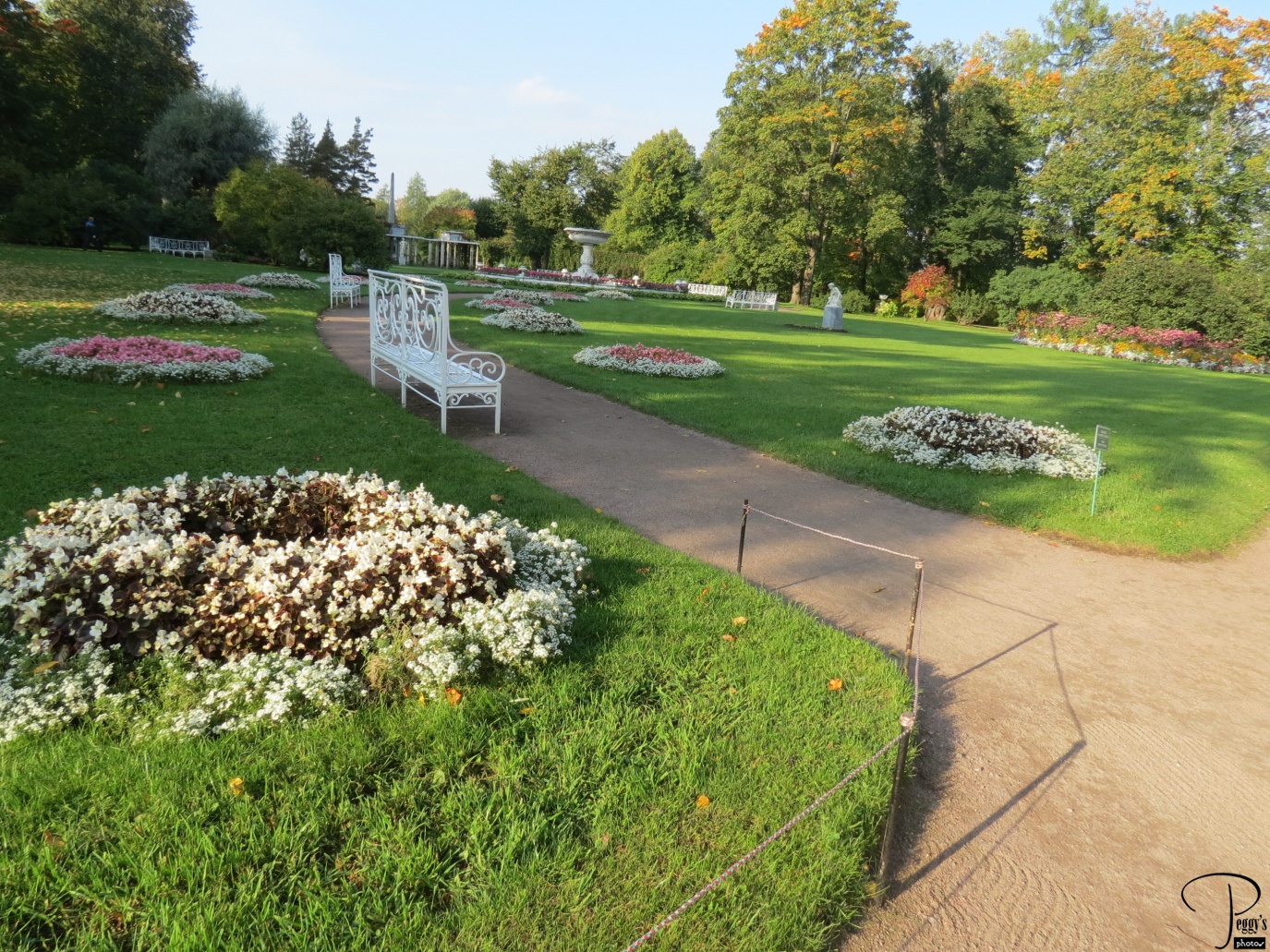
Walking through the gardens at Catherine’s Palace.

Catherine’s Palace
Catherine’s Palace
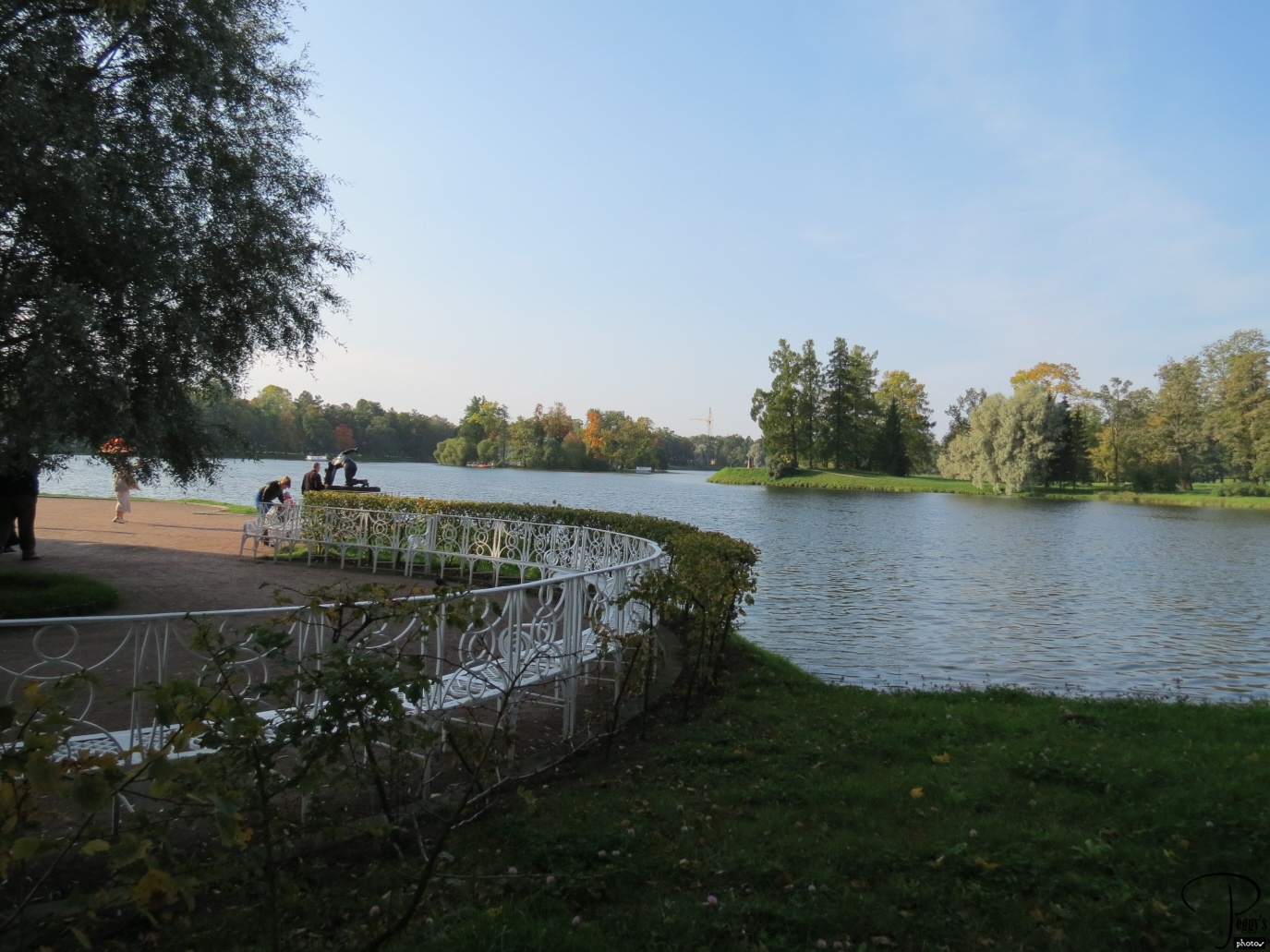
The lake at Catherine’s Palace.

Catherine’s Palace
Catherine’s Palace
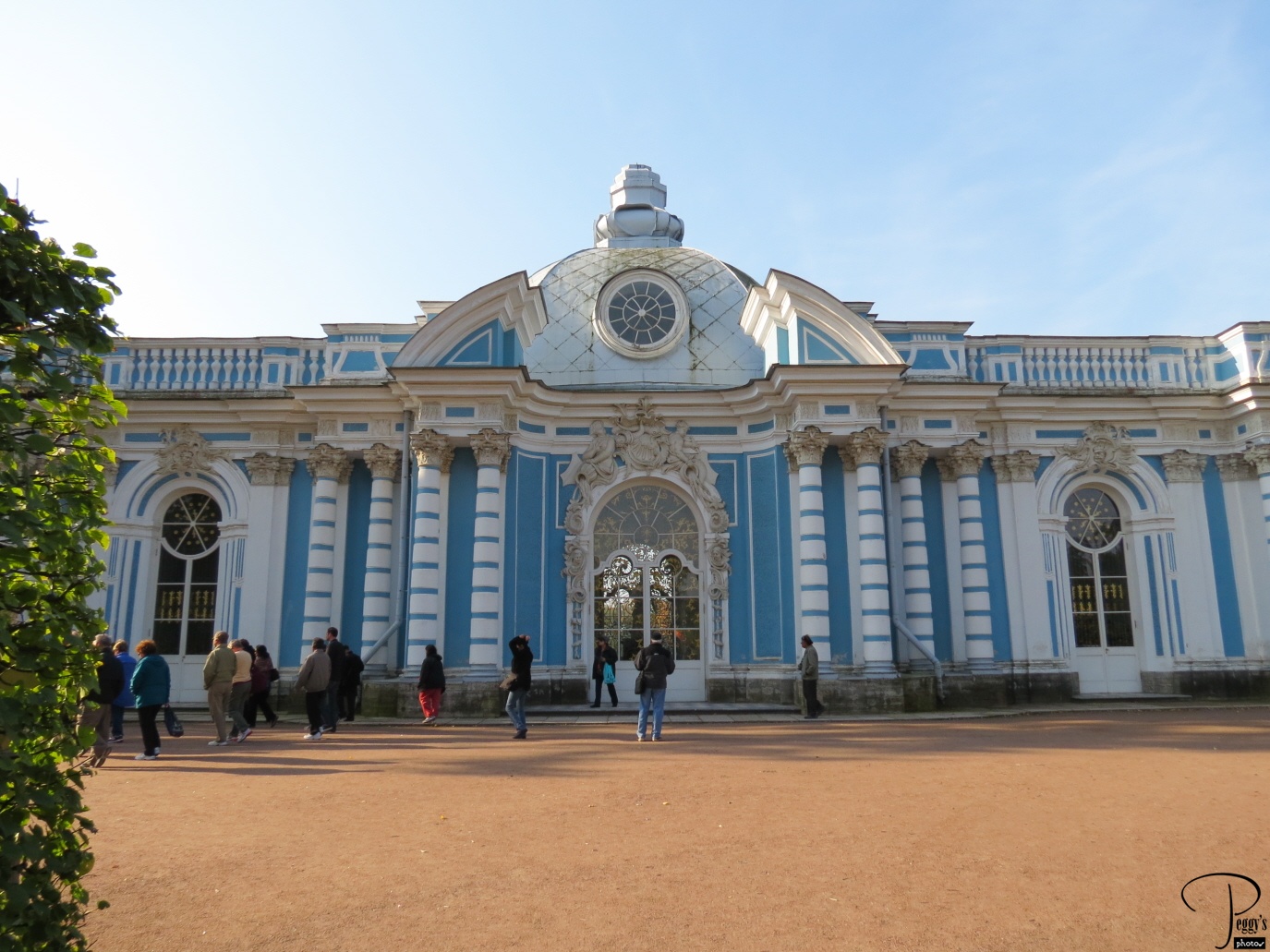
We went inside this building which I think was a church and were treated to an a cappella choir, a movie of their singing is on the next page.
You could easily spend a whole day at the palace. The complex is quite big and there are more interesting rooms to view in the main palace.
I have put the rest of my photos of Catherine’s Palace on a Slide Show. Go directly to
http://www.peggysphotos.com/saint–petersburg–catherines–palace/
or to Slide Shows, Eastern Europe, Russia–2, St. Petersburg: Catherine’s Palace.

Catherine’s Palace
Catherine’s Palace A Capella Choir–Movie
The a cappella choir at Catherine’s Palace.

Catherine’s Palace A Capella Choir–Movie
Souvenir Stands
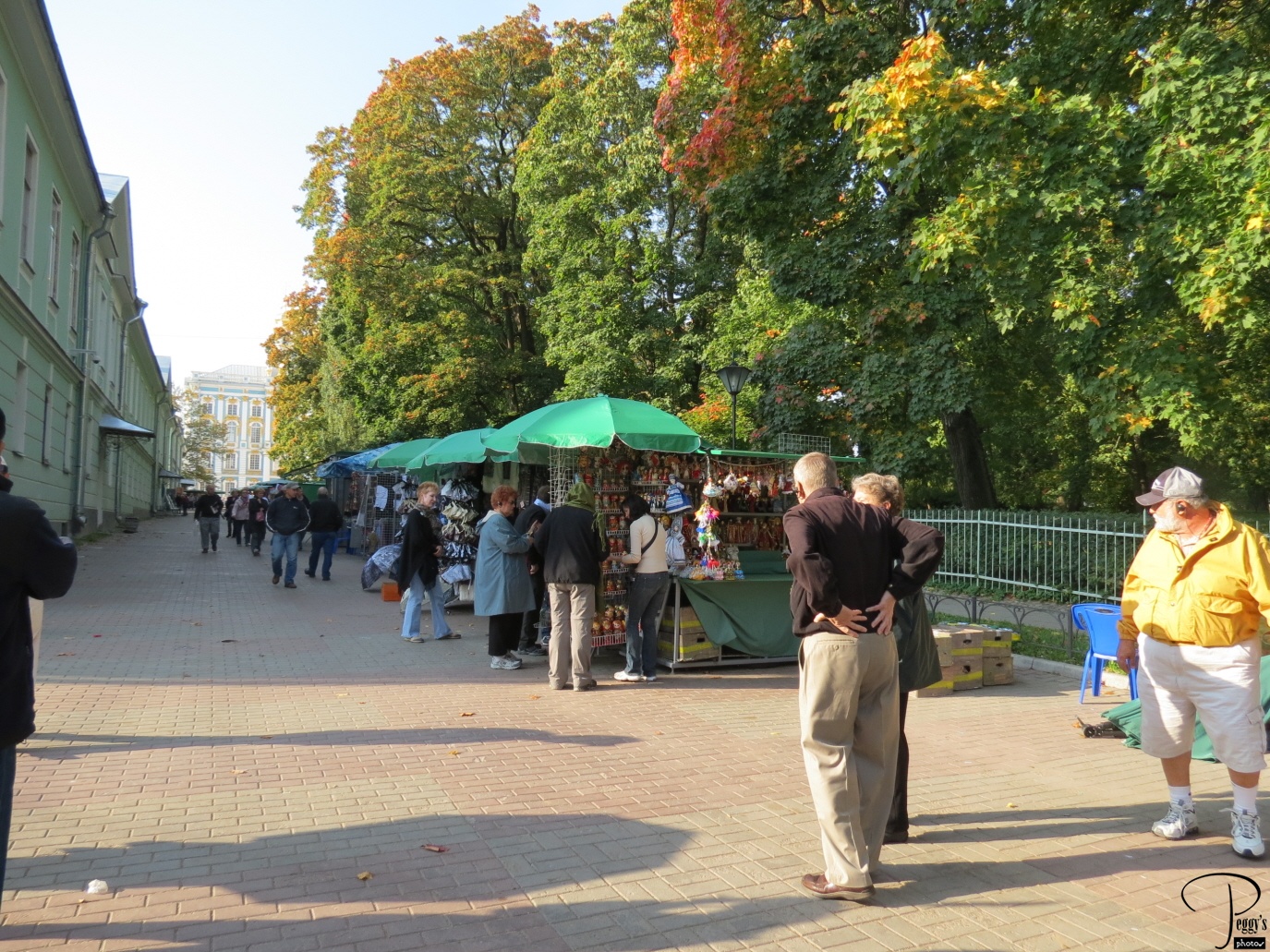
A row of souvenir stands on the way back to the bus.

Souvenir Stands
Souvenirs
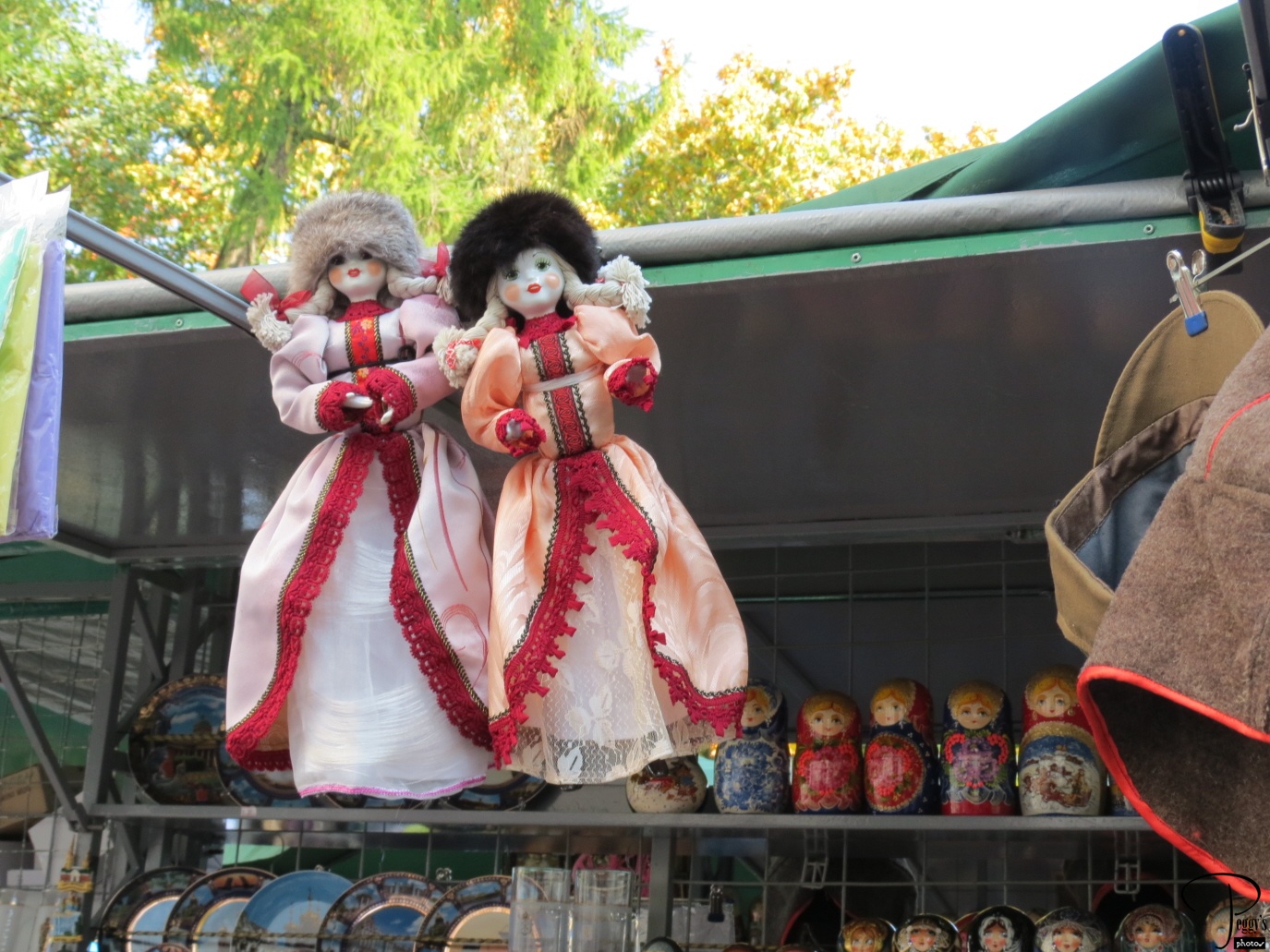
Souvenirs for sale.

Souvenirs
Souvenirs
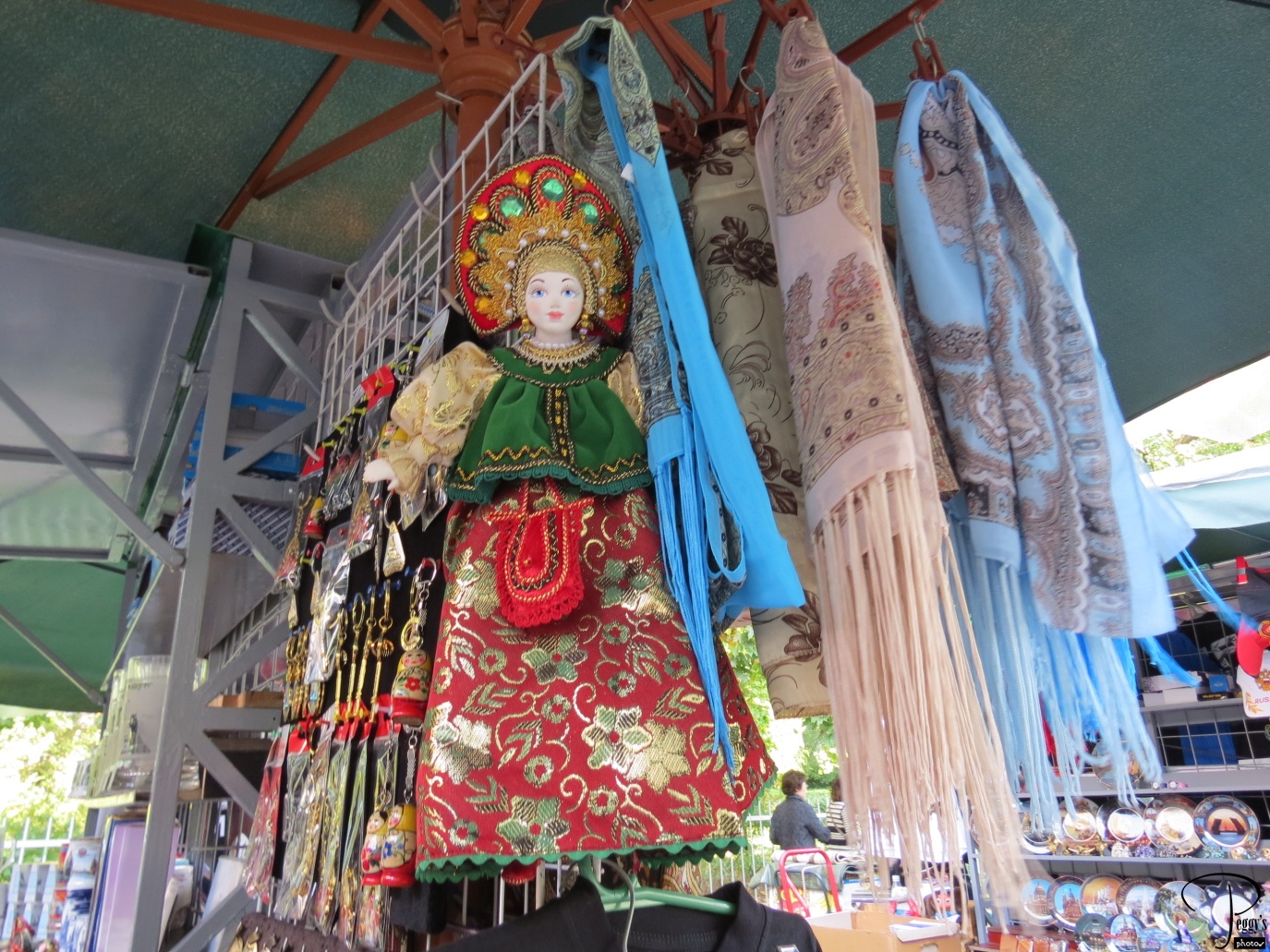
Souvenirs

Souvenirs
Souvenirs
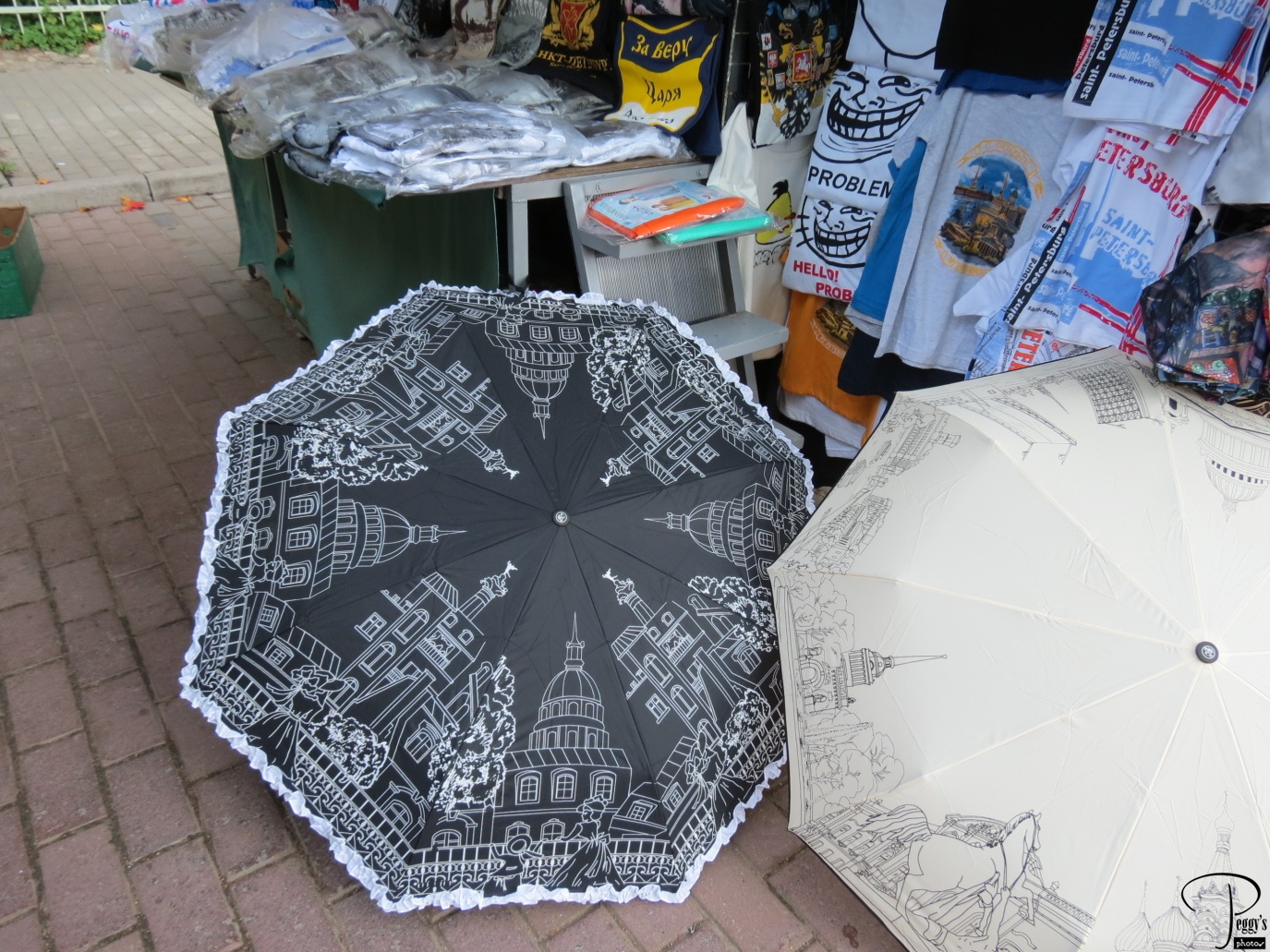
Souvenirs for sale. St. Petersburg umbrellas.

Souvenirs
Souvenirs
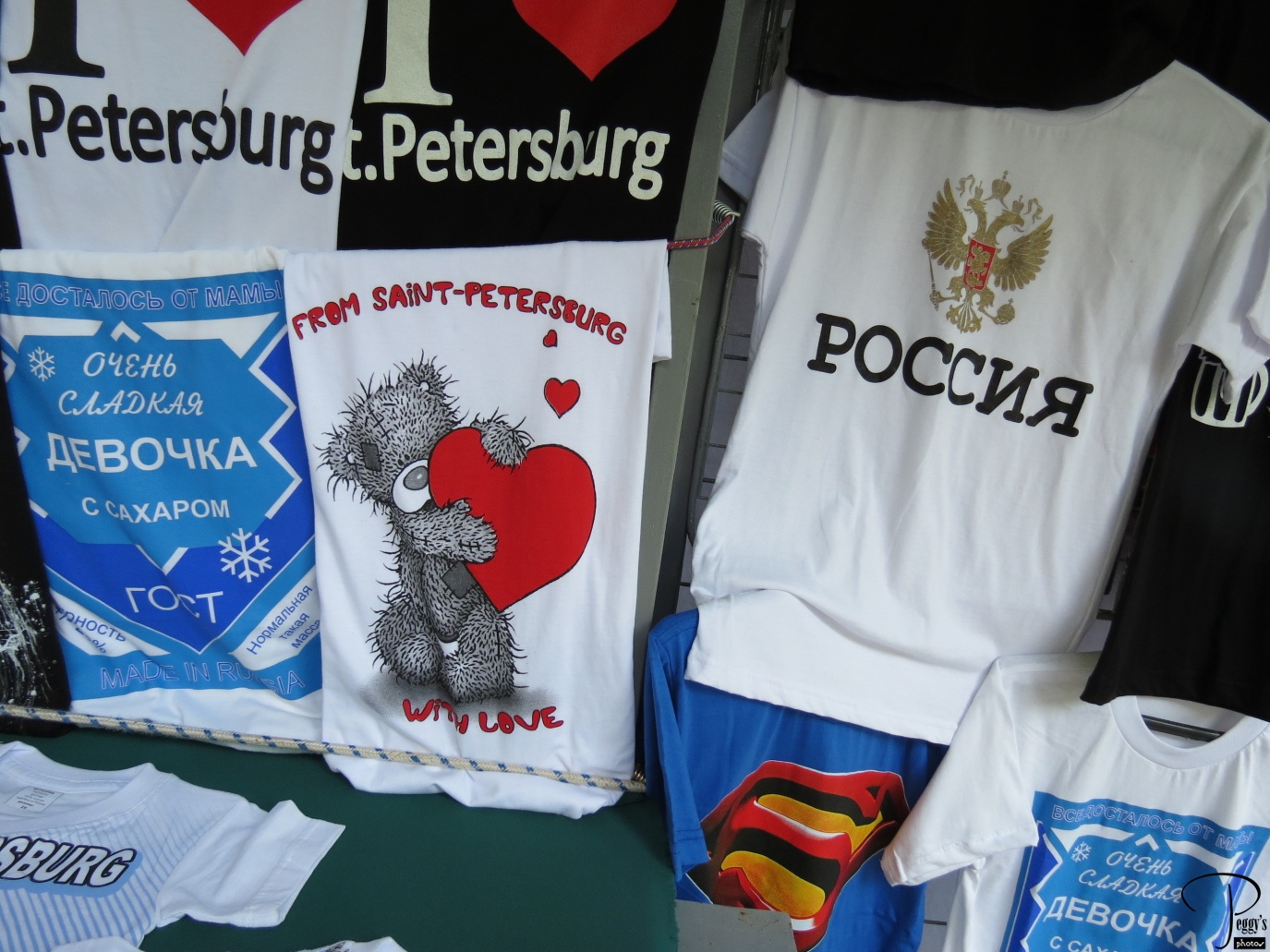
T–shirts.

Souvenirs
Band at Catherine’s Palace-1–Movie
This three–piece band greeted us when we got off the bus at Catherine’s Palace.

Band at Catherine’s Palace-1–Movie
Band at Catherine’s Palace-2–Movie
The band grew to more members when we left Catherine’s Palace. Odd to hear them playing a Beattles song: “When I’m 64.”

Band at Catherine’s Palace-2–Movie
Seen on the Way to Peterhof

Russian housing development.

Seen on the Way to Peterhof
Seen on the Way to Peterhof
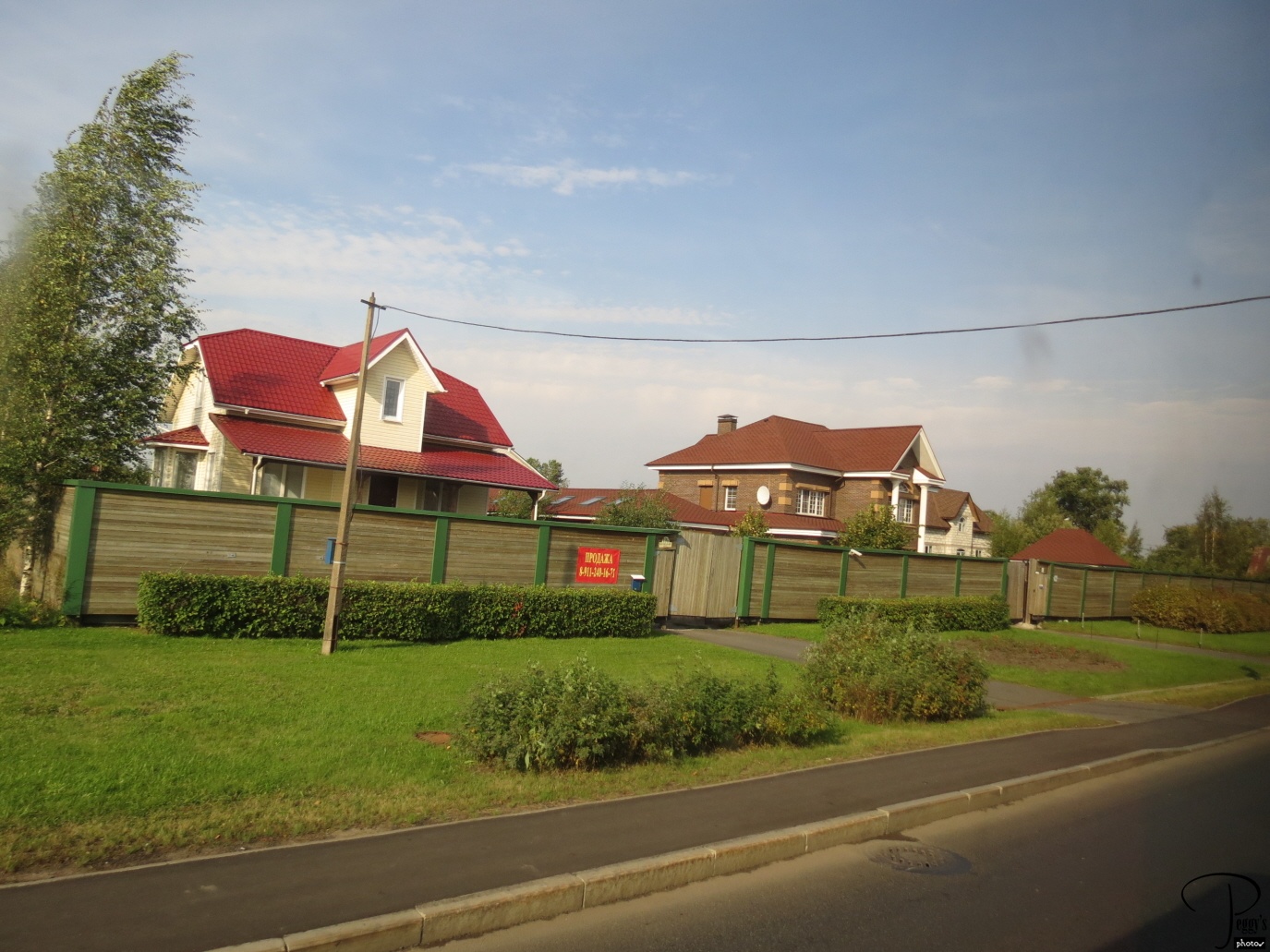
Another Russian housing development.
Our local guide pointed out St. Petersburg in the distance from here and how close to the city the Germans came to it during World War II––very close. She also told us about the Siege of Leningrad (St. Petersburg was known as Leningrad then). The siege (also known as the Leningrad Blockcade) began in September 1941 and ended in January 1944 and resulted in the deaths from famine and also from bombardment during evacuations of almost 3 million people.

Seen on the Way to Peterhof
Seen on the Way to Peterhof
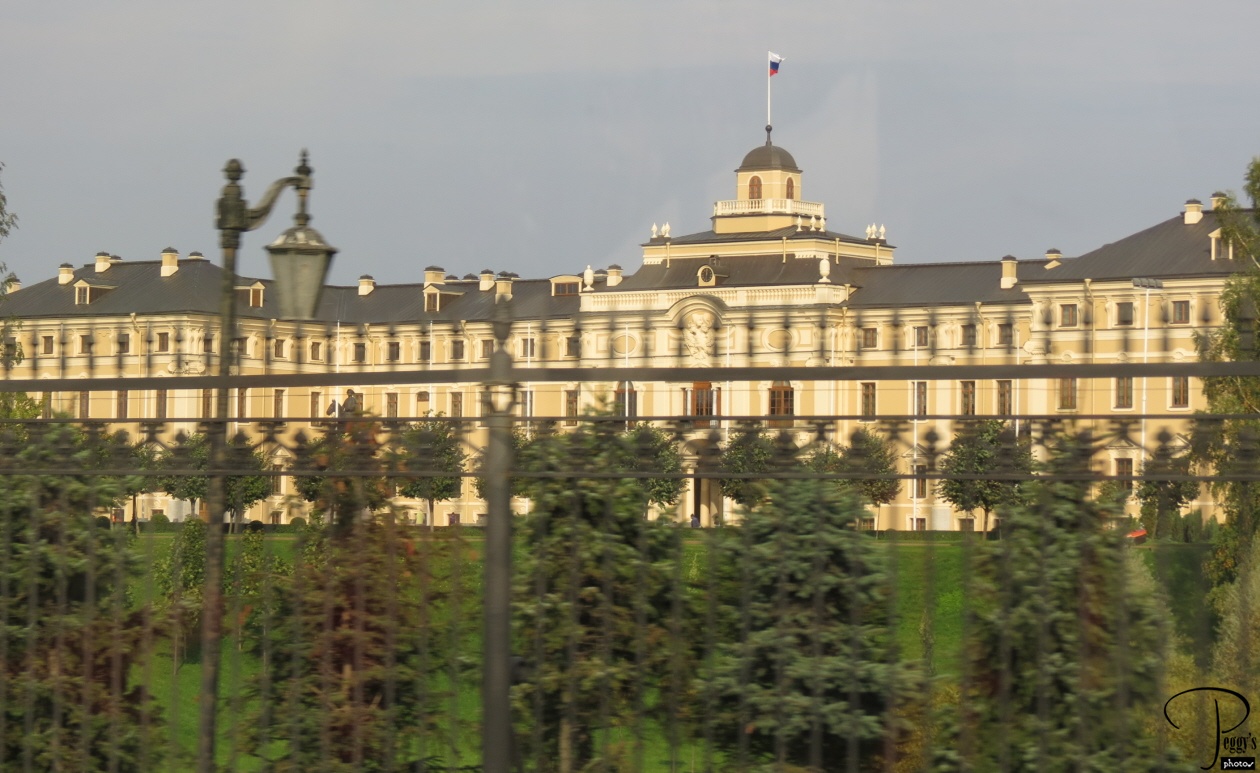
I believe our local guide told us that conferences are held here.

Seen on the Way to Peterhof
Peterhof
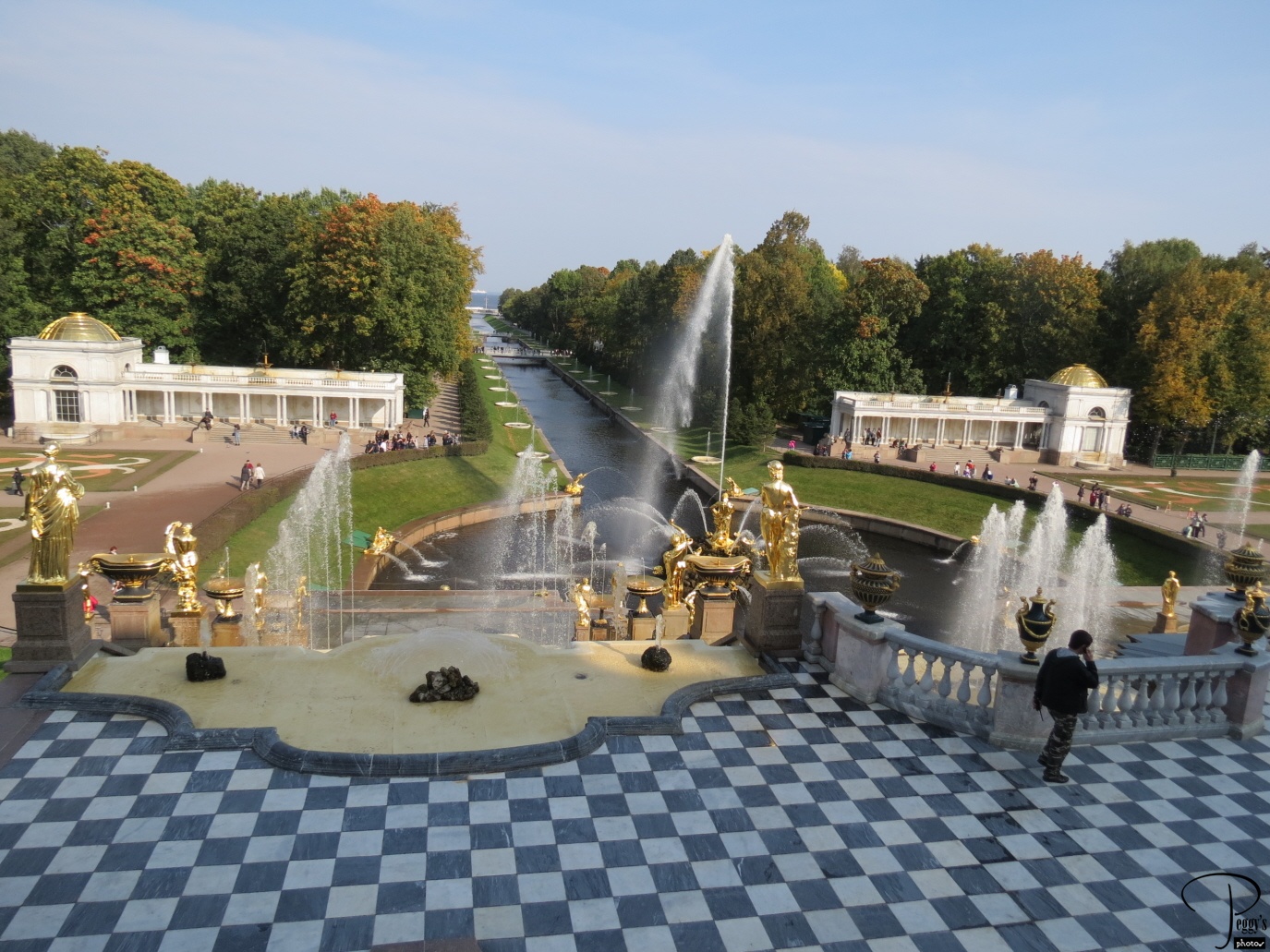
Our next stop was at the Peterhof Palace. Peterhof was begun in 1714 during the reign of Peter the Great. On its grounds are numerous fountains. The fountain shown here is Samson Fountain and the channel from the fountain is the Sea Channel. The palace was largely destroyed by the German Army in World War II and has been since renovated.
I put the rest of my photos of Peterhof on a slide show. Go directly to
http://www.peggysphotos.com/st–petersburg–peterhof/
or to Slide Shows, Eastern Europe, Russia–2, St. Petersburg: Peterhof.
I took two movies of the fountains at Peterhof and they are on the next pages.

Peterhof
The Samson Fountain–Movie
The Samson Fountain at Peterhof. The statue depicts the moment when Samson tears open the jaws of a lion, representing Russia’s victory over Sweden in the Great Northern War.

The Samson Fountain–Movie
The Children’s Fountain at Peterhof–Movie
This fountain is for the children.

The Children’s Fountain at Peterhof–Movie
Souvenirs
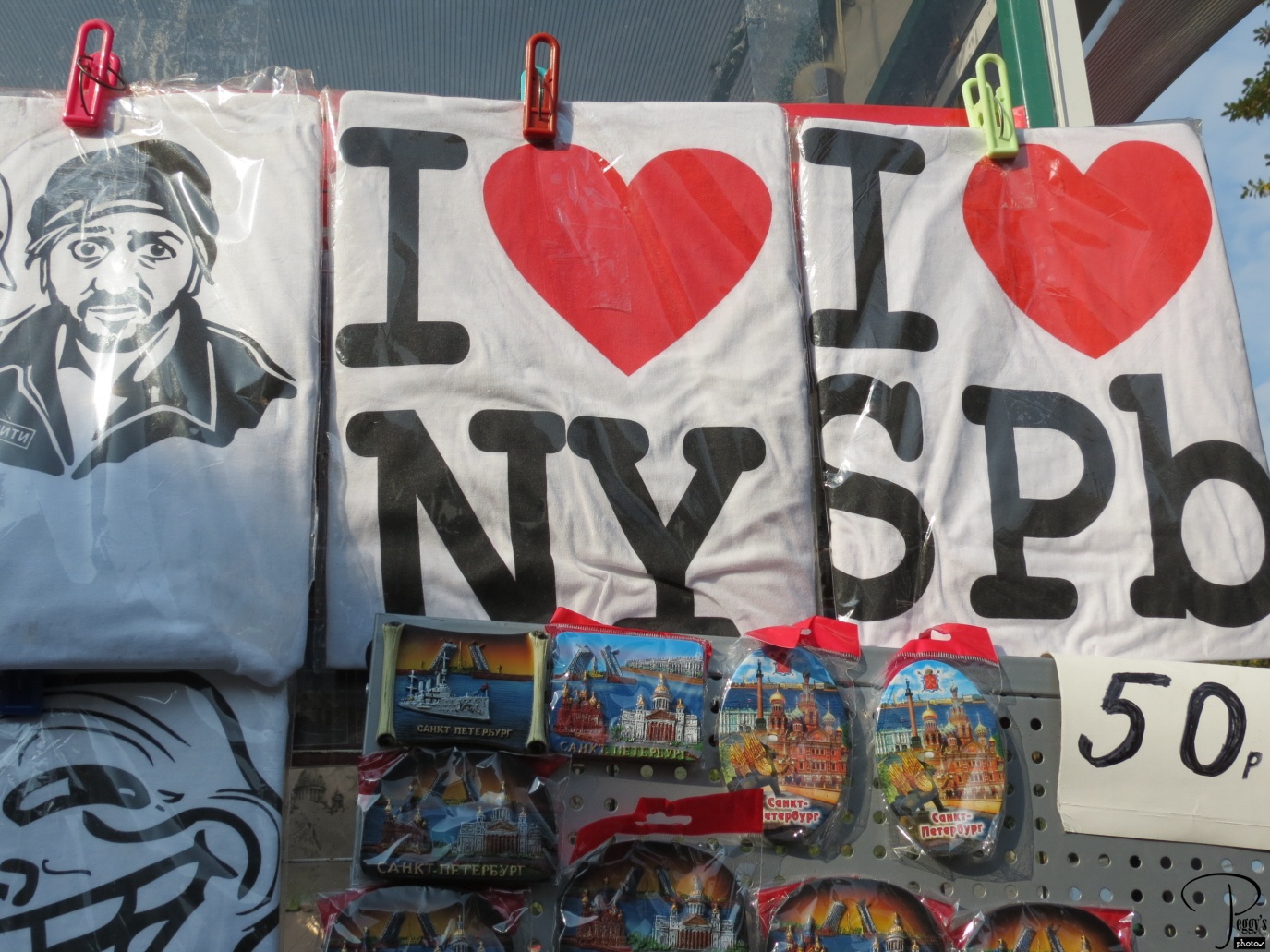
More souvenirs to buy outside the entrance of Peterhof. No reason you shouldn’t be able to buy an “I LOVE NY” T–shirt in Russia!

Souvenirs
Souvenirs
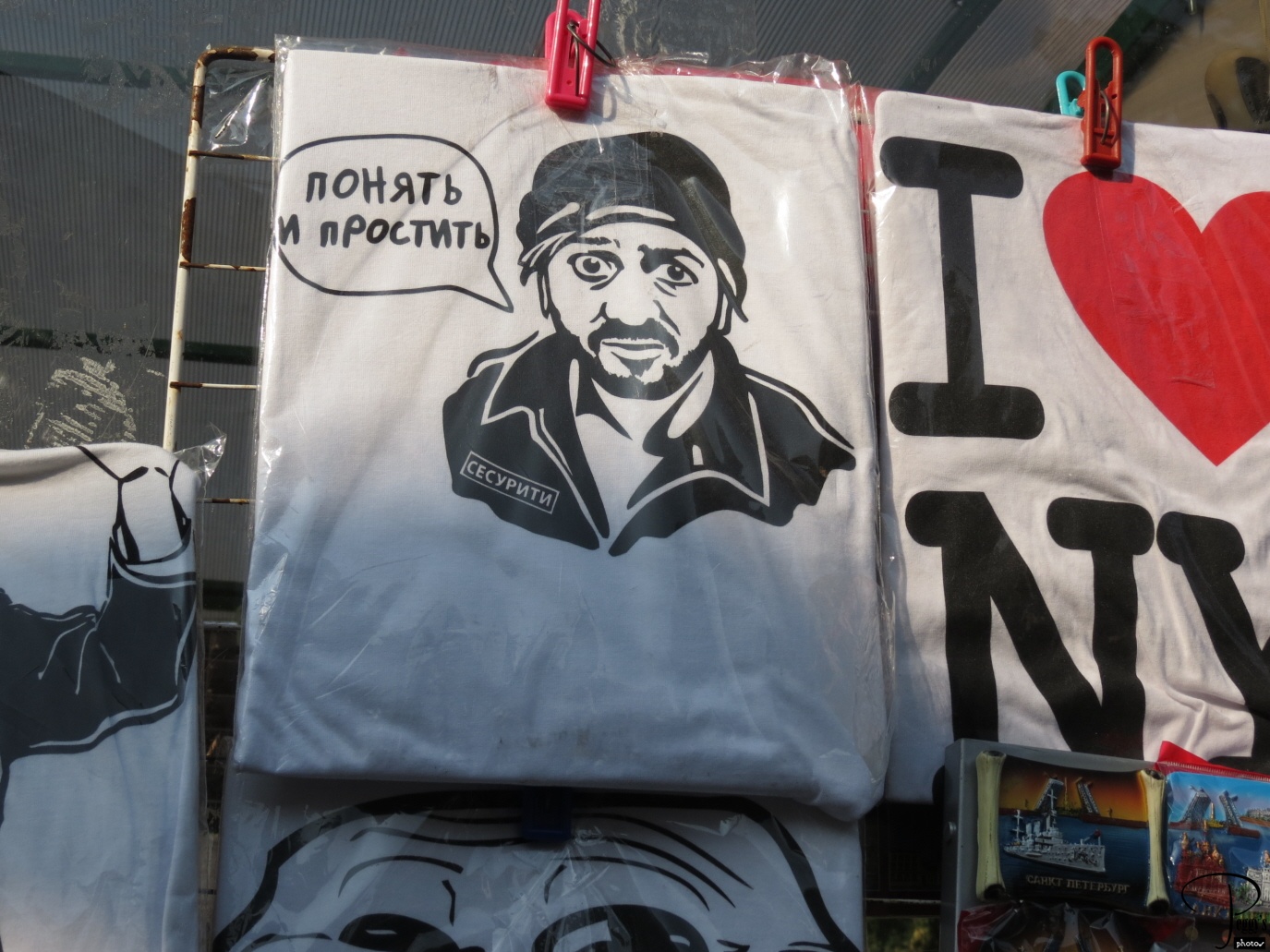
The T–shirt next to the “I LOVE NY” one.

Souvenirs
Souvenirs
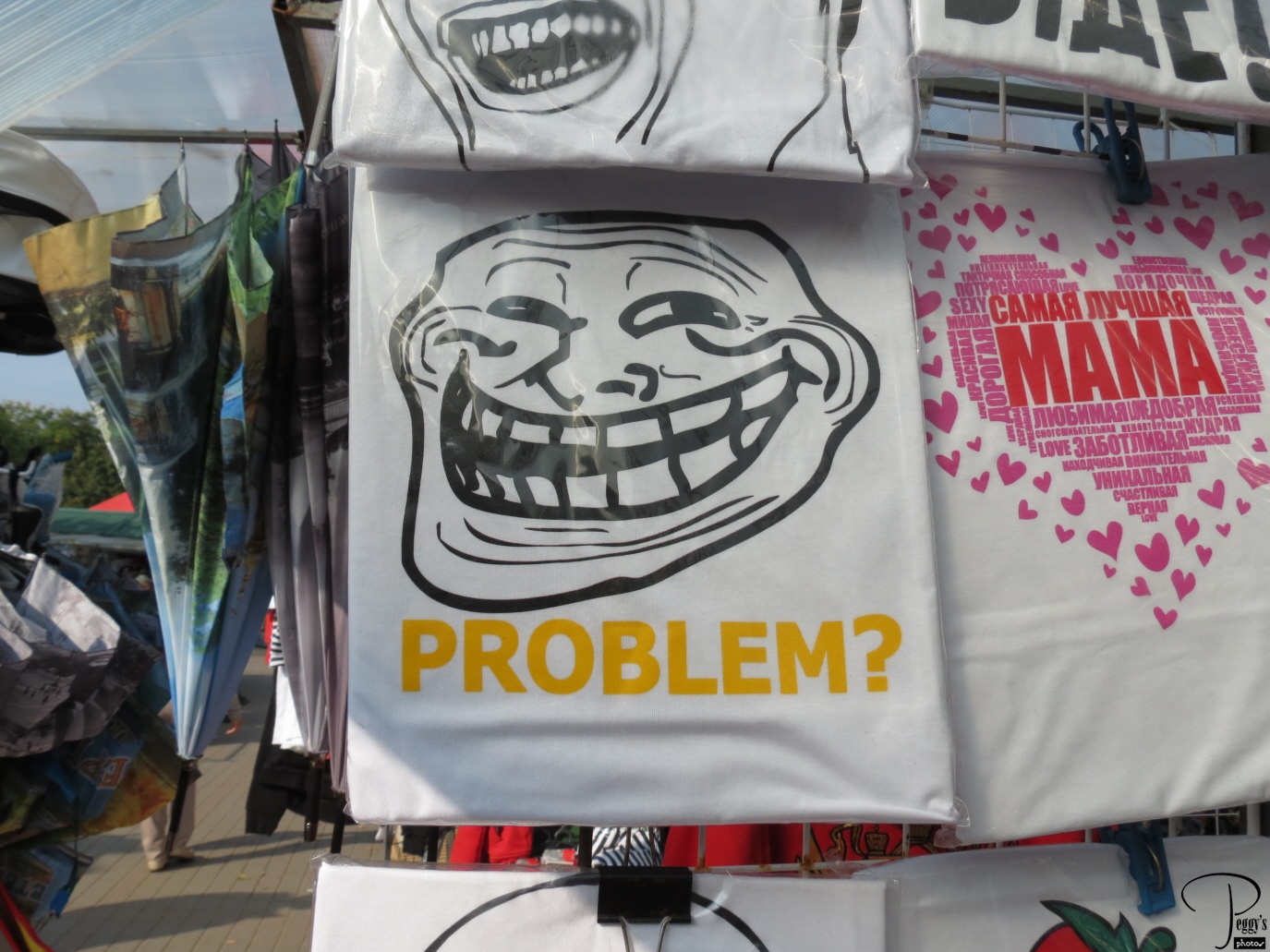
A funny T–shirt?

Souvenirs
Souvenirs
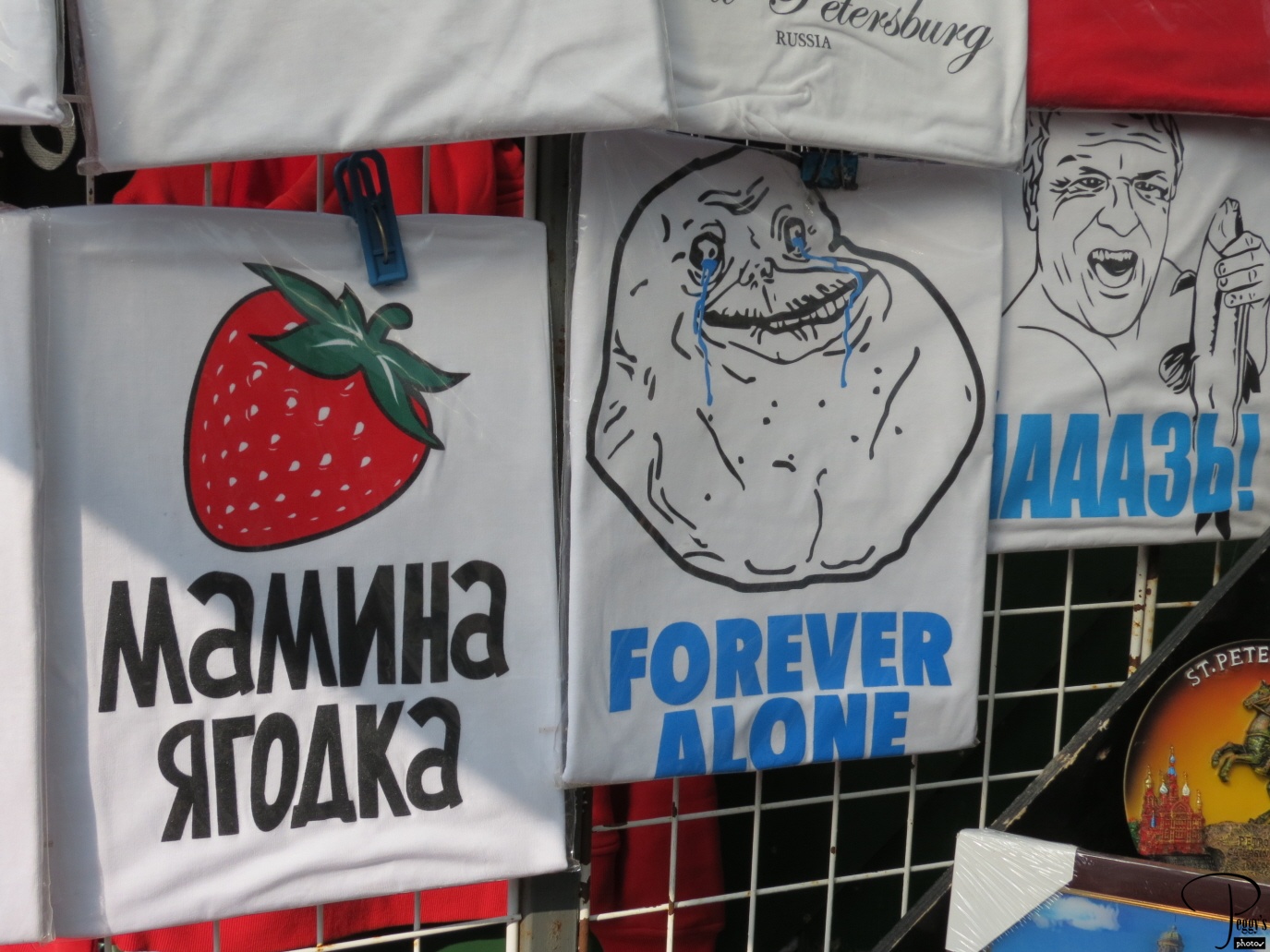
A strawberry T–shirt and a sad one.

Souvenirs
Souvenirs
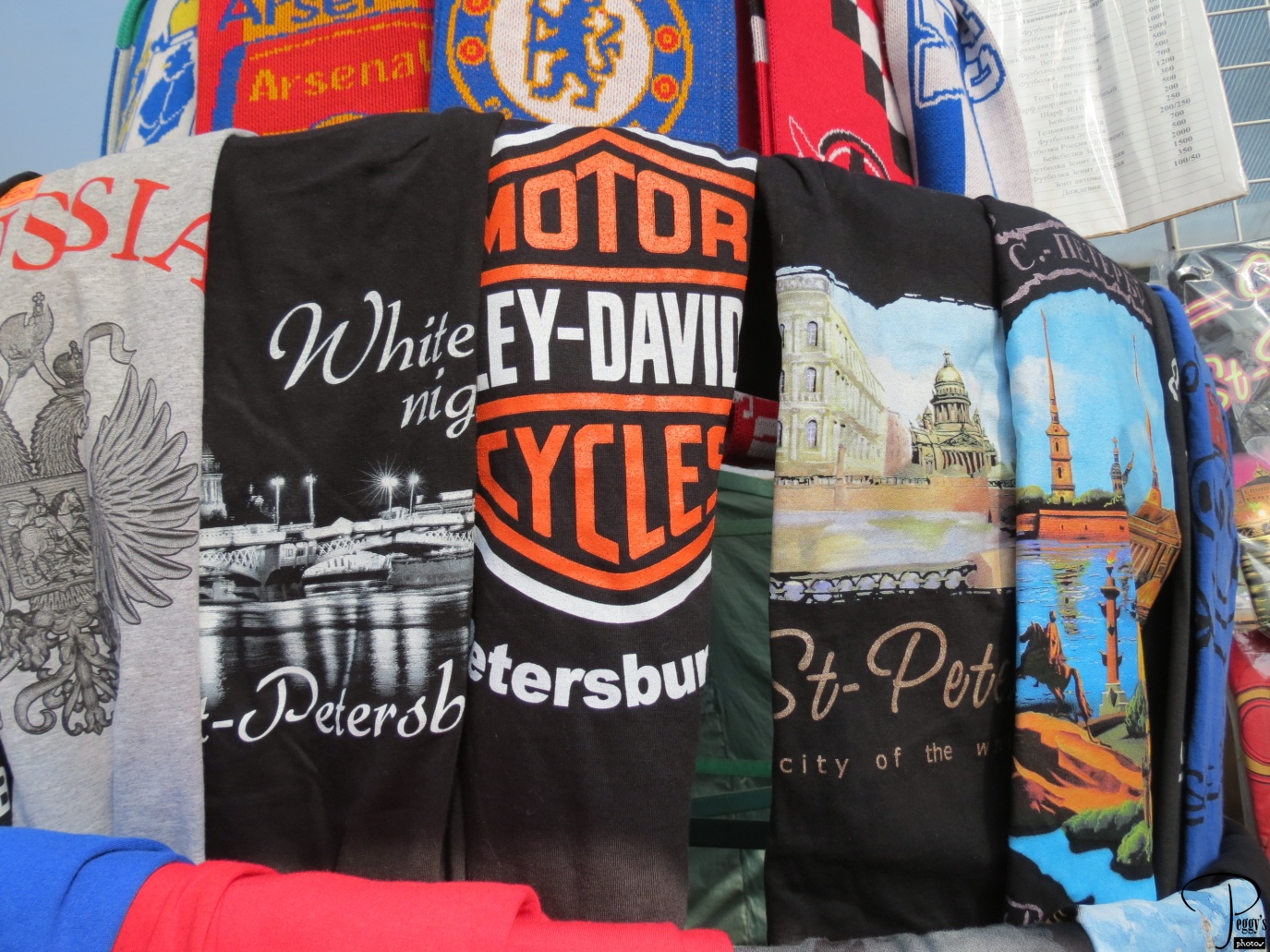
For motorcycle buffs.

Souvenirs
Souvenirs
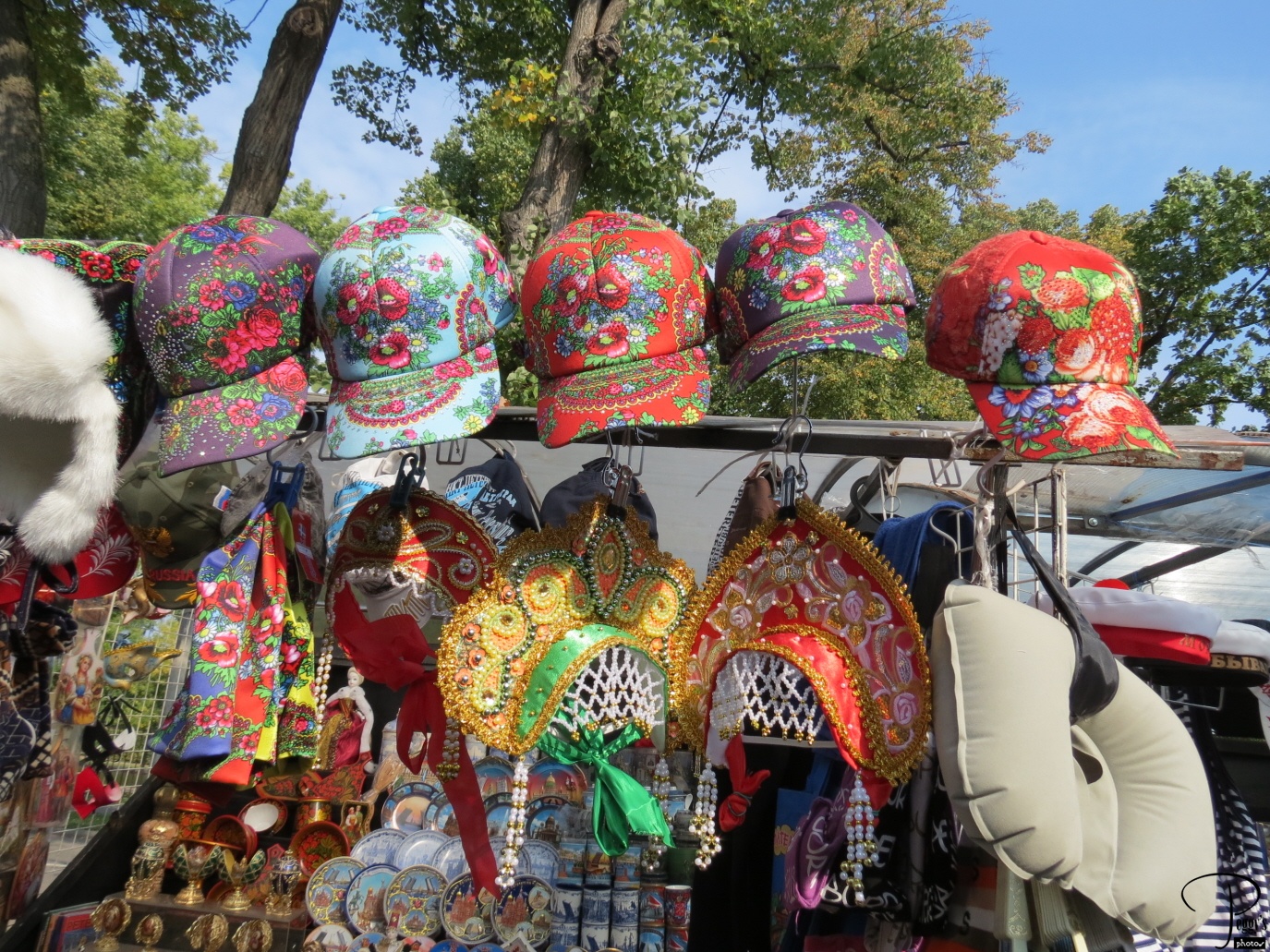
Colorful hats.

Souvenirs
Driving Through Puskin
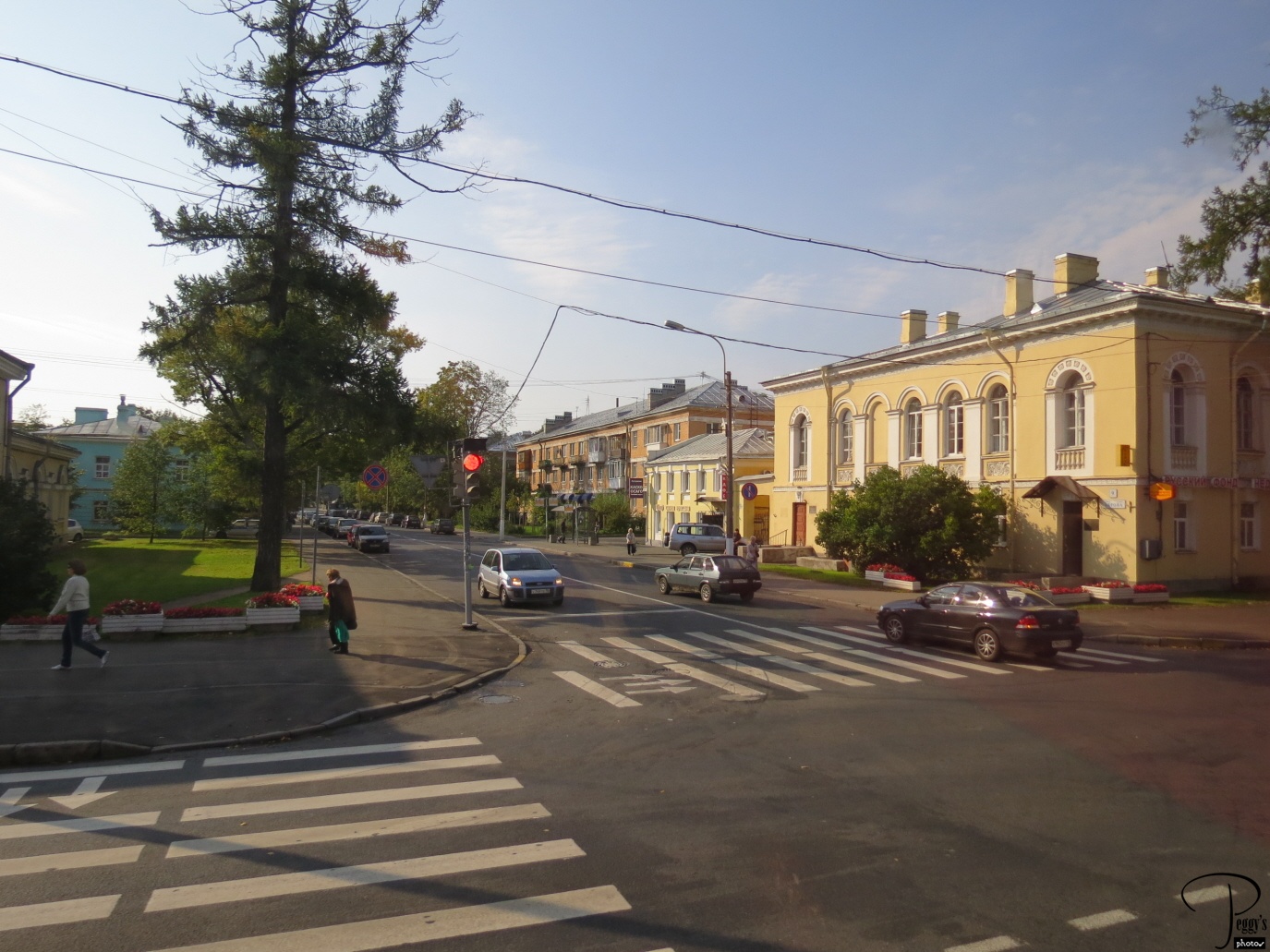
We drove through the town of Puskin, which was largely destroyed by the German during World War II, on the way back to our ship. The old buildings are its main street have been restored.

Driving Through Puskin
Driving Through Puskin
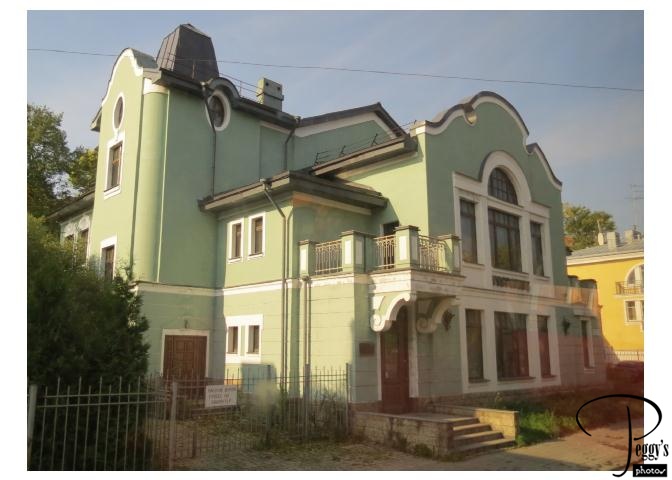
A restored building.

Driving Through Puskin
Driving Through Puskin
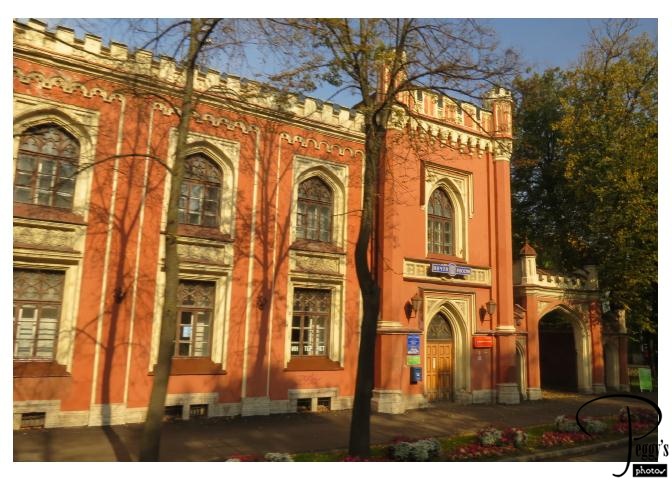
Another restored building.

Driving Through Puskin
Driving Through Puskin

The Sts. Peter and Paul Cathedral.

Driving Through Puskin
Driving Through Puskin
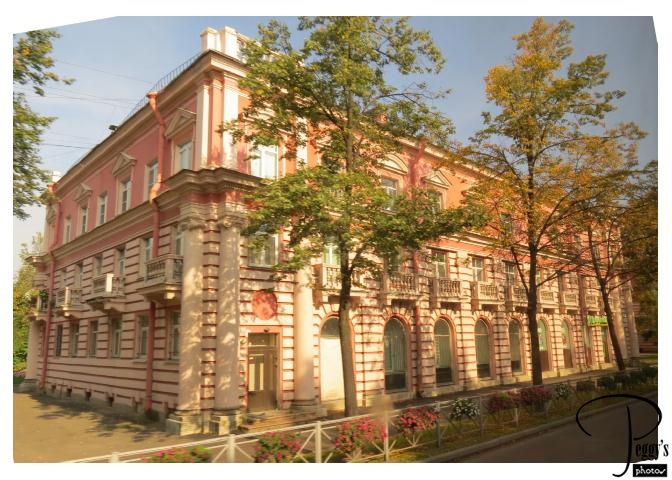
A restored building.

Driving Through Puskin
Driving Through Puskin

Another restored building.

Driving Through Puskin
Bagatitsa–Cossack Dancers
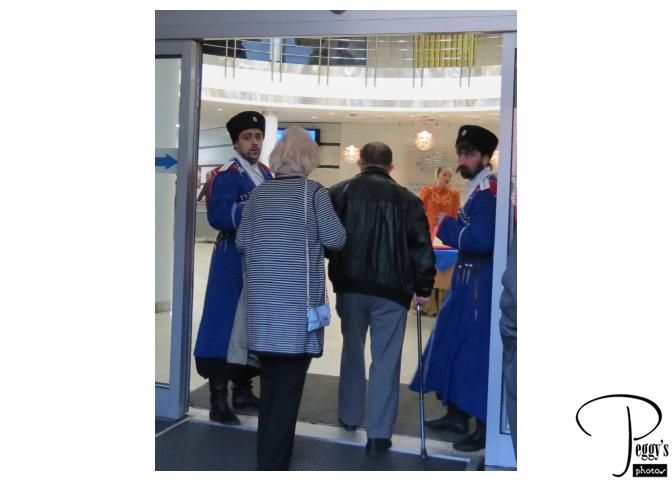
After returning to the ship for a late lunchat 3:30 p.m., we left for an optional folk show, Bagatittsa, at 7:00 p.m. The Bagatitsa is an ensemble of dance and songs of the Cossacks. They claim that they “Protect the Soul of Russia.” This was the best folk show I have ever been to and one of the most enjoyable shows as well.
I took this photo surreptitiously as, if they saw you with a camera, the Cossacks at the door immediately told you that no photos were allowed unless you paid a fee. Actually, there were two fees––one for still photos and one for videos. I could only afford to take videos as payment had to be exact even though you could pay in U.S. currency. I had U.S. $20 bills, but few small bills. I was able to scrounge up a combination of euros, which I had taken to use at the German airports, U.S. bills, and ruble coins to come up with the $8 charge.
Two short movies of the Cossack Dancers are on the next two pages. Eight longer movies of the show are under Movies. Go to Movies, Central/Eastern Europe Movies, starting on page 10. Enjoy the show!

Bagatitsa–Cossack Dancers
Bagatitsa–Cossack Dancers–Movie-1
The Cossack Dancers.

Bagatitsa–Cossack Dancers–Movie-1
Bagatitsa–Cossack Dancers–Movie-2
The Cossack Dancers.

Bagatitsa–Cossack Dancers–Movie-2
Leaving St. Petersburg and Going Home
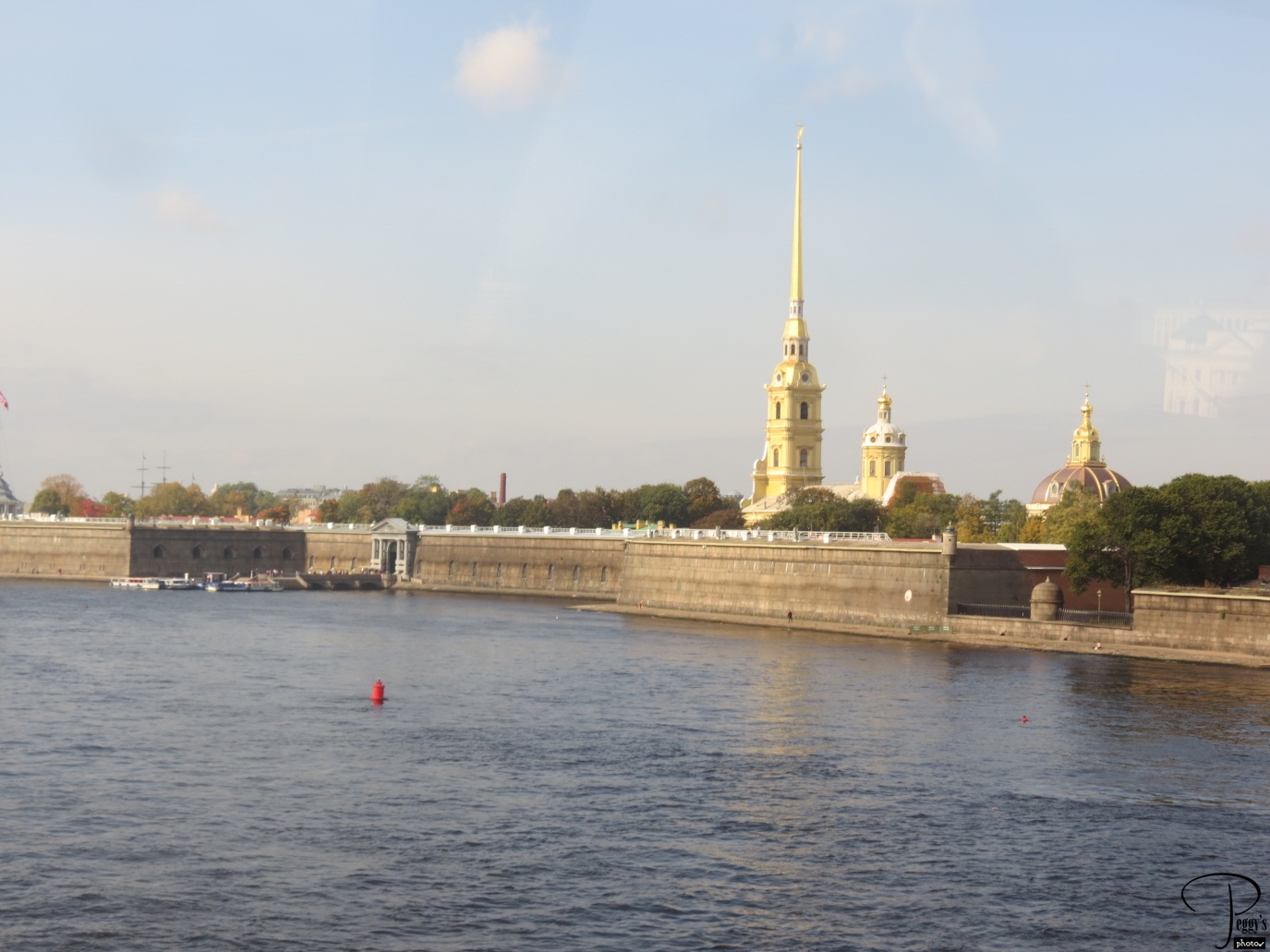
We got back to our ship from the Cossack show past 10:30 p.m. and had a late dinner. My plane left St. Petersburg at 5:50 a.m., so there was just a short nap that night before having to leave to go to the airport. Actually, a whole bus load of people had to leave very early––some flying to Frankfurt and Dave, Joyce, and I flying to Munich, where we arrived at 6:35 a.m. because of the two–hour time difference between Russia and Germany. I had to part with Dave and Joyce at the Munich airport as they were flying on to Frankfurt and I was flying from a different terminal to the U.S. My flight to the U.S. didn’t leave until 3:45 p.m., so I had a lot of time to keep from falling asleep. I had a great American–style breakfast with German coffee. I noticed that some men were having tall glasses of German beer with their breakfasts––they weren’t going to miss the beer on their short stop in Germany. Luckily, when I wasn’t walking around looking at the stores, I waited in a section that was blasting the departing flights as I kept falling asleep, then waking up when an announcement came over the loud speaker.
My flight was on a A–346, which had its bathrooms downstairs rather than right in the seating compartments. My seatmate was a young Austrian woman who was going to the U.S. to meet her brother there and then they were going to visit Joshua Tree National Park. She told me that she spends her travel money on seeing America’s national parks rather than exploring Europe, as she is fascinated by them. I did tell her that it was still summer in September in Southern California and to expect very hot weather at the park which is located in the desert. This surprised her.
My impressions of Russia: A very interesting country to visit, but you need enough time to explore Moscow and St. Petersburg than a tour usually gives you.
